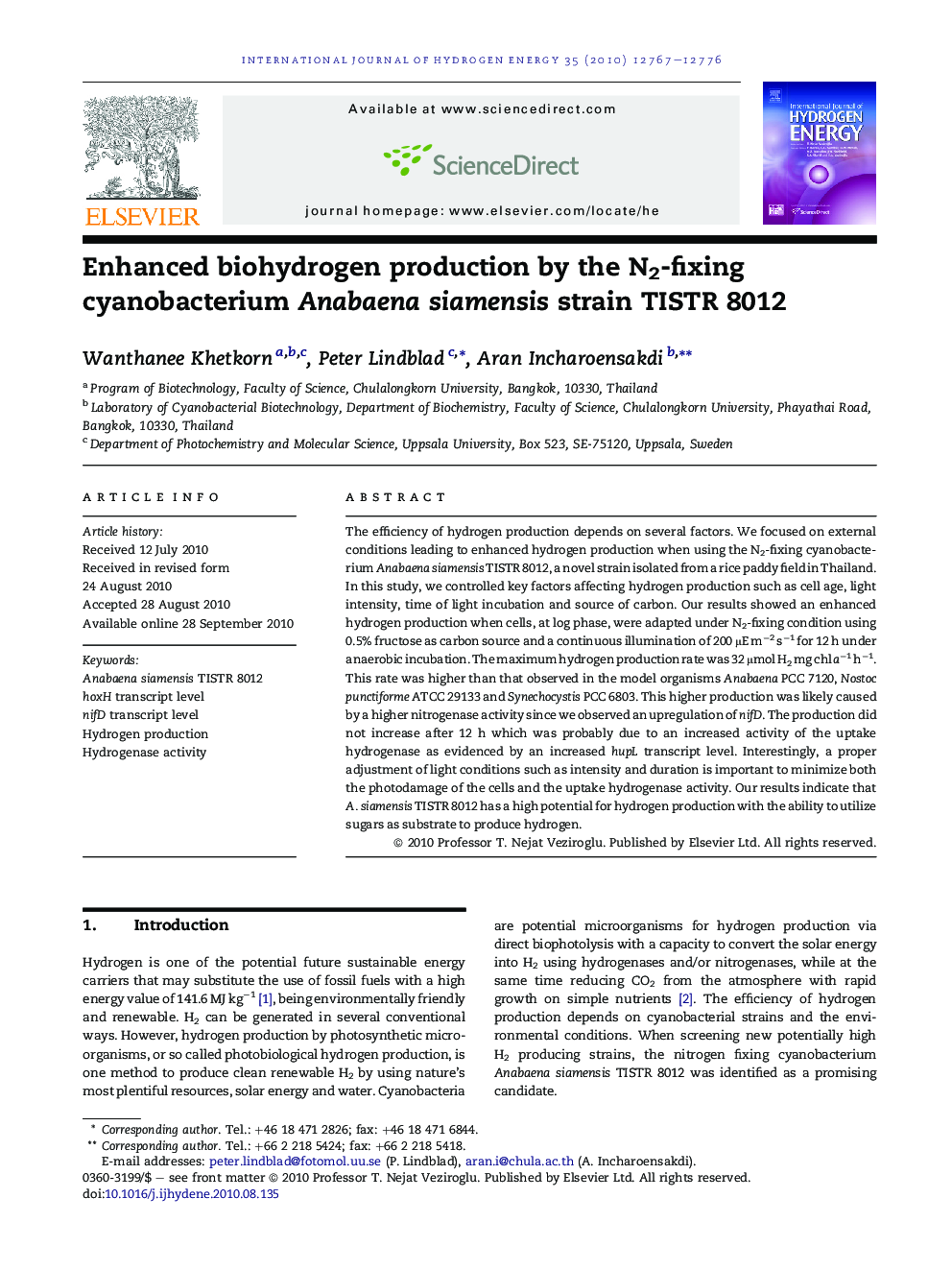| Article ID | Journal | Published Year | Pages | File Type |
|---|---|---|---|---|
| 1279918 | International Journal of Hydrogen Energy | 2010 | 10 Pages |
The efficiency of hydrogen production depends on several factors. We focused on external conditions leading to enhanced hydrogen production when using the N2-fixing cyanobacterium Anabaena siamensis TISTR 8012, a novel strain isolated from a rice paddy field in Thailand. In this study, we controlled key factors affecting hydrogen production such as cell age, light intensity, time of light incubation and source of carbon. Our results showed an enhanced hydrogen production when cells, at log phase, were adapted under N2-fixing condition using 0.5% fructose as carbon source and a continuous illumination of 200 μE m−2 s−1 for 12 h under anaerobic incubation. The maximum hydrogen production rate was 32 μmol H2 mg chl a−1 h−1. This rate was higher than that observed in the model organisms Anabaena PCC 7120, Nostoc punctiforme ATCC 29133 and Synechocystis PCC 6803. This higher production was likely caused by a higher nitrogenase activity since we observed an upregulation of nifD. The production did not increase after 12 h which was probably due to an increased activity of the uptake hydrogenase as evidenced by an increased hupL transcript level. Interestingly, a proper adjustment of light conditions such as intensity and duration is important to minimize both the photodamage of the cells and the uptake hydrogenase activity. Our results indicate that A. siamensis TISTR 8012 has a high potential for hydrogen production with the ability to utilize sugars as substrate to produce hydrogen.
